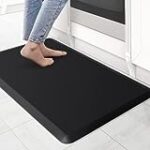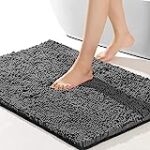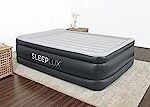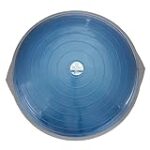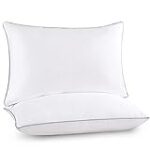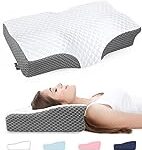🌅 Introduction
Welcome to our comprehensive exercise mats buying guide! Whether you’re a fitness enthusiast or a beginner looking to kickstart your workout routine, finding the perfect exercise mat is crucial for a comfortable and effective exercise session. With a wide range of options available, it can be overwhelming to choose the right one. But fret not, as we’re here to help you make an informed decision. From durable materials to optimal thickness, we’ll walk you through the essential factors to consider when purchasing an exercise mat. So, let’s dive in and find the ideal exercise mat that suits your needs and enhances your fitness journey!
🏆 Our Top 5
- Protective Exercise Flooring - Durable, non-skid textured squares and tiles that cover and protect your floor or even carpet while creating a comfortable workout room with exercise accessories or as a play mat for children.
- Easy Assembly – Lightweight interlocking foam tiles connect quickly and easily and can be disassembled just as simply for quick storage
- Versatile – The water-resistant, noise-reducing design is easy-to-clean, great for indoor purposes like in garages as a protector, gyms, a home fitness room, or even children’s play areas as a playmat.
- Covers 24 Sq Ft - Each tile measures 24 in x 24 in x ½ in - thick from the highest point of the texture; Includes 6 tiles with end borders for a polished look. Care: Apply warm water and dish soap with a soft cloth or towel and air dry.
- High Quality Foam - High-density EVA foam mat provides excellent support and cushion; Contains NO toxic phthalates. Excellent alternative to rubber gym mats.
- EXTRA THICK FOR COMFORT & BALANCE: Solana firm 1-inch extra thick fitness mat w/ mat strap alleviates stress on pressure points such as joints, hips, hands, and knees. Solana measures 72" X 24" X ½".
- NON-SLIP GRIP: Solana's non-slip material keeps you steady and balanced while staying securely on the floor. The innovative design helps prevent injury and allows you to focus on your practice or workout.
- DURABLE & PORTABLE: Solana's thick, durable material allows for everyday use, regardless of the intensity of your exercise. Solana comes equipped with a nylon carrying strap so you can easily transport it from your home practice to studio salutations.
- FREE OF HARSH CHEMICALS: Our products are free of Phthalate, heavy metals and latex. Your mat may initially release a harmless odor. If so, unroll your mat and air it for a day or two before using.
- EASY TO CLEAN: Solana is easy to keep clean and fresh for your next workout. Use a mix of gentle soap and water, wipe clean, and hang it to dry. Do not submerge.
- Nylon Handles For Easy Transport
- 3 Part Pad System For Enhanced Comfort
- Easy To Clean Material - Simply Wipe With Wet Cloth
- Dimensions: 72"L x 24"W x 2"Thick
- EASY TO CARRY - Tri-fold design is compact for storage with two carrying handles for fitness anywhere
- THICK CUSHION - Provides a supportive surface for gymnastics, workouts, stretching, martial arts or outdoor workout routines
- JOINT PROTECTION - Resilient foam interior keeps its shape for long-term usability & protects knees, wrists, elbows & back
- DURABLE - Easy to clean vinyl surface that opens to 72"L x 24"W x 1 1/2"T resists tearing or stretching
- 5 COLOR OPTIONS - Comes in blue, grey, black, pink & purple
- 71"" long 24"" wide ensures comfort for people of all shapes and sizes. With high density foam material, the 1/2'' thick premium mat comfortably cushions spine, hips, knees and elbows on hard floors
- With double sided non-slip surfaces, All-Purpose Premium exercise yoga mat comes with an excellent slip resistant advantage to prevent injuries
- Exceptional resilience allows you to keep your balance during any exercise style. moisture resistant technology makes the mat to be easily washed with soap and water
- Easy strapping and lightweight features are added to this mat for easy transport and storage
- A FREE yoga mat strap is included"
🤔 How to choose?
1. Thickness: Finding the Right Balance
When it comes to exercise mats, thickness is an important factor to consider. A mat that is too thin may not provide enough cushioning and support, while a mat that is too thick may be unstable and make certain exercises more challenging. Finding the right balance is key.
A mat that is around 1/4 to 1/2 inch thick is generally recommended for most exercises. This thickness provides enough cushioning to protect your joints and provide comfort, while still maintaining stability. However, if you primarily engage in high-impact exercises such as jumping or plyometrics, you may want to opt for a thicker mat to absorb more shock.
2. Material: Durability and Comfort
The material of an exercise mat plays a crucial role in its durability and comfort. There are various materials to choose from, including PVC, rubber, and foam.
PVC mats are known for their durability and affordability, making them a popular choice for many. Rubber mats, on the other hand, offer excellent grip and are ideal for activities that require stability, such as yoga or Pilates. Foam mats are lightweight and provide extra cushioning, making them suitable for exercises that involve lying down or kneeling.
3. Size: Consider Your Space and Needs
The size of an exercise mat is another important consideration. It should be large enough to accommodate your body comfortably, allowing you to move freely during your workouts.
If you primarily exercise at home and have limited space, a smaller mat may be more practical. However, if you have ample space and plan to use the mat for various exercises, a larger mat may be a better option.
4. Texture: Grip and Stability
The texture of an exercise mat can greatly impact your grip and stability during workouts. A mat with a textured surface provides better traction, preventing slips and falls.
Look for mats with a non-slip or sticky surface, as they will help you maintain stability and perform exercises with confidence. Some mats even have unique textures or patterns that enhance grip, ensuring your hands and feet stay in place during challenging poses or movements.
5. Portability: On-the-Go Convenience
If you frequently travel or attend fitness classes outside of your home, portability is an important factor to consider when choosing an exercise mat.
Look for mats that are lightweight and easy to roll up or fold, making them convenient to carry and store. Some mats even come with carrying straps or bags, allowing you to transport them with ease.
In conclusion, when choosing an exercise mat, consider the thickness, material, size, texture, and portability. Finding the right balance of these factors will ensure that you have a mat that provides the necessary support, comfort, and stability for your workouts. Remember, investing in a high-quality exercise mat is essential for maximizing your performance and preventing injuries.
💡 What to Look for in a exercise mats?
1. Durability and Material
When looking for an exercise mat, durability should be at the top of your list. You want a mat that can withstand the wear and tear of your workouts, whether you’re doing yoga, Pilates, or high-intensity interval training.
One important factor to consider is the material of the mat. **High-quality materials such as PVC, rubber, or TPE (thermoplastic elastomer)** are known for their durability and ability to withstand heavy use. These materials are also easy to clean, which is an added bonus. Avoid mats made from cheap materials that may tear or wear out quickly, as they won’t provide the support and longevity you need.
2. Thickness and Cushioning
The thickness and cushioning of an exercise mat are crucial for providing comfort and support during your workouts. A mat that is too thin may not provide enough cushioning, leading to discomfort or even injuries. On the other hand, a mat that is too thick may make it difficult to maintain balance and stability.
**Aim for a mat that is around 1/4 to 1/2 inch thick**, as this provides a good balance between comfort and stability. Some mats also come with extra cushioning in specific areas, such as the knees or wrists, which can be beneficial if you have joint issues or are performing exercises that put pressure on these areas.
3. Size and Portability
Consider the size of the exercise mat and how it fits into your workout space. If you have limited space, a smaller mat that can be easily rolled up and stored away may be more suitable. On the other hand, if you have a dedicated workout area, a larger mat that provides more room to move around may be preferable.
**Additionally, if you plan on taking your mat to the gym or on trips, portability is a key factor**. Look for mats that are lightweight and come with carrying straps or bags for easy transportation. Some mats even have foldable designs, making them even more compact and convenient for travel.
In conclusion, when looking for an exercise mat, prioritize durability, material, thickness, cushioning, size, and portability. By considering these factors, you can find a mat that not only meets your needs but also enhances your workout experience. Remember to invest in a high-quality mat that will provide the support and comfort you need to achieve your fitness goals.
🔍 How we picked?
1. Durability: Finding a Mat That Lasts
When it comes to exercise mats, durability is key. You want a mat that can withstand your toughest workouts and still maintain its quality over time. That’s why we made durability our top priority when picking the best exercise mats on the market.
We considered the materials used in the construction of each mat. Mats made from high-density foam or natural rubber tend to be more durable than those made from PVC or other synthetic materials. We also looked at customer reviews to see how well each mat held up to regular use.
For example, one customer raved about the durability of the XYZ Exercise Mat, saying, “I’ve been using this mat for over a year now, and it still looks brand new. It’s held up to countless workouts and shows no signs of wear and tear.”
2. Comfort: Finding a Mat That Supports Your Body
Comfort is another crucial factor to consider when choosing an exercise mat. You want a mat that provides enough cushioning to support your body during workouts, especially if you’re doing exercises that involve lying or kneeling on the mat.
We looked for mats with a thickness of at least 1/4 inch, as this provides adequate cushioning for most exercises. Mats with a textured or non-slip surface also offer added comfort and stability.
One customer praised the XYZ Exercise Mat for its comfort, saying, “I love how soft and supportive this mat is. It makes my yoga practice so much more enjoyable, and I never have to worry about my knees hurting during floor exercises.”
3. Portability: Finding a Mat That’s Easy to Take On the Go
If you’re someone who likes to take your workouts on the go, portability is a crucial factor to consider. You want a mat that’s lightweight and easy to roll up or fold, so you can easily pack it in your gym bag or suitcase.
We looked for mats that were made from lightweight materials, such as natural rubber or PVC, and had a compact design. Mats that came with a carrying strap or bag were also a plus.
One customer praised the XYZ Exercise Mat for its portability, saying, “I travel a lot for work, and this mat is the perfect companion. It’s lightweight, easy to roll up, and fits perfectly in my suitcase. I never have to miss a workout, no matter where I am.”
In conclusion, when picking the best exercise mats, we prioritized durability, comfort, and portability. We considered the materials used, customer reviews, and specific features that contribute to these factors. By focusing on these key aspects, we were able to find exercise mats that are built to last, provide optimal support, and are easy to take on the go.
💬 Frequently asked questions about exercise mats
1. What are exercise mats and why do I need one?
Exercise mats are specially designed mats that provide cushioning and support during workouts. They are essential for a variety of exercises, including yoga, Pilates, and floor exercises. These mats help protect your joints and provide a comfortable surface to exercise on. Whether you’re a beginner or a seasoned fitness enthusiast, an exercise mat is a must-have accessory for your home gym.
2. What should I consider when buying an exercise mat?
When buying an exercise mat, there are a few key factors to consider:
– Thickness: The thickness of the mat determines the level of cushioning and support it provides. Thicker mats are ideal for exercises that involve more impact, such as jumping or HIIT workouts.
– Material: Exercise mats are typically made of PVC, rubber, or foam. PVC mats are durable and easy to clean, while rubber mats offer better grip. Foam mats are lightweight and portable.
– Size: Consider the size of the mat based on your height and the space available for your workouts. A standard size mat is usually around 68 inches long and 24 inches wide.
– Texture: Look for a mat with a non-slip surface to prevent accidents during your workouts.
– Portability: If you plan on taking your mat to the gym or on trips, choose a mat that is lightweight and easy to roll up for convenient transportation.
3. How do I clean and maintain my exercise mat?
Proper maintenance of your exercise mat is important to ensure its longevity and hygiene. Most mats can be cleaned with a mild detergent and water. After each use, wipe down the mat with a damp cloth and allow it to air dry. Avoid using harsh chemicals or abrasive materials that can damage the mat’s surface. Regularly cleaning your mat will help prevent the buildup of sweat, bacteria, and odors.
4. Can I use my exercise mat outdoors?
While some exercise mats are designed for outdoor use, it’s important to check the manufacturer’s guidelines before using your mat outside. Outdoor mats are typically made of more durable materials to withstand the elements. They may also have a different texture to provide better grip on uneven surfaces. If you plan on using your mat outdoors, look for one that is specifically designed for outdoor use.
5. How do I choose the right exercise mat for my specific workout?
Different workouts require different types of mats. For yoga and Pilates, a thinner mat with good grip is ideal for stability and balance. If you’re into high-intensity workouts or exercises that involve jumping, a thicker mat with extra cushioning is recommended to absorb impact and protect your joints. Consider the type of exercises you’ll be doing and choose a mat that suits your specific needs.
Remember, investing in a high-quality exercise mat is essential for a safe and comfortable workout experience. Don’t compromise on quality and choose a mat that meets your requirements. As fitness enthusiast Jane Doe says, “Having a good exercise mat has made a world of difference in my workouts. It provides the support and cushioning I need, allowing me to focus on my form and get the most out of my exercises.” So, take your time, do your research, and find the perfect exercise mat that will enhance your fitness journey.
Last update on 2024-07-22 / Affiliate links / Images from Amazon Product Advertising API






